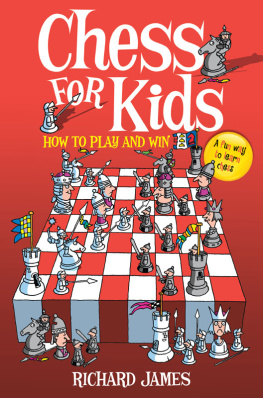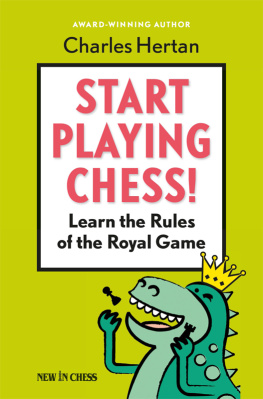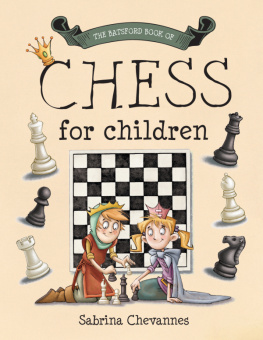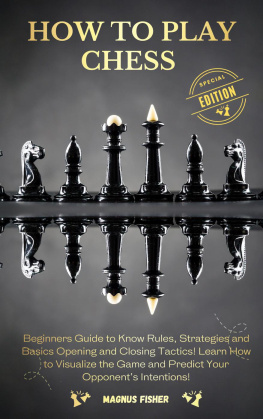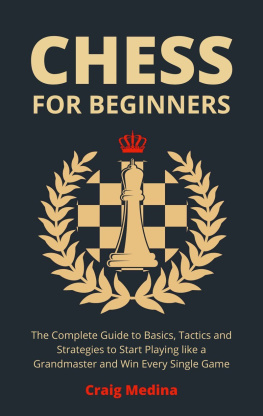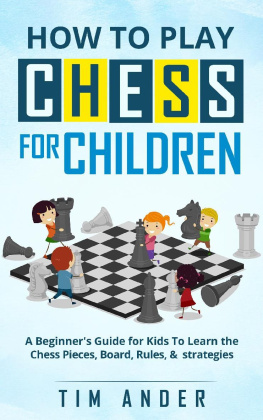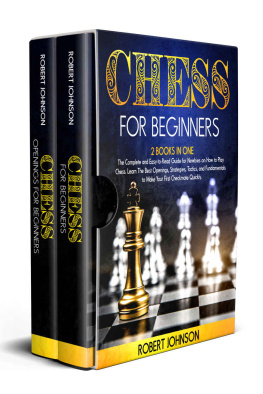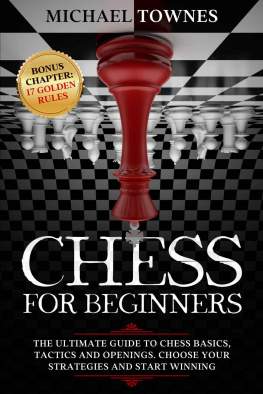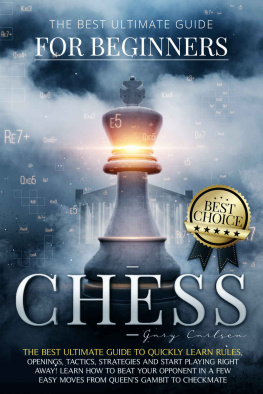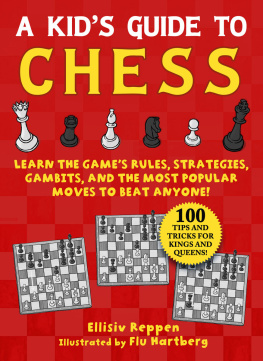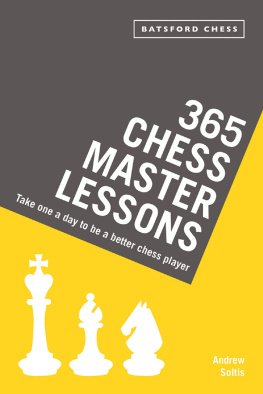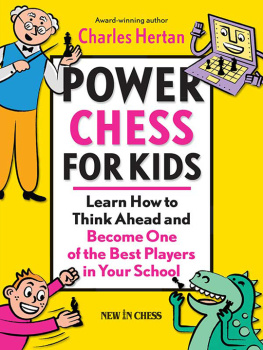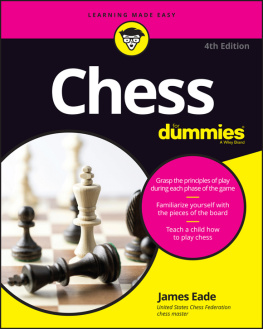Chess
for Kids
About the Author
Richard James has been teaching chess to children since the 1970s and has worked with many future Grandmasters and International Masters. Richard is the webmaster of chessKIDS academy, a website pioneering online interactive chess instruction for young children: www.chesskids.com
Acknowledgements
Thanks to ChessBase ( www.chessbase.com ) for providing the chess fonts used in the diagrams, and to David Mostyn for his cartoons.

Constable & Robinson Ltd
5556 Russell Square
London WC1B 4HP
www.constablerobinson.com
First published in the UK by Right Way,
an imprint of Constable & Robinson, 2010
Copyright Richard James 2010
The right of Richard James to be identified as the author of this work has been asserted by him in accordance with the Copyright, Designs & Patents Act 1988.
All rights reserved. This book is sold subject to the condition that it shall not, by way of trade or otherwise, be lent, re-sold, hired out or otherwise circulated in any form of binding or cover other than that in which it is published and without a similar condition including this condition being imposed on the subsequent purchaser.
A copy of the British Library Cataloguing in Publication Data is available from the British Library
ISBN: 978-0-7160-2254-1
eISBN: 978-0-7160-2336-4
1 3 5 7 9 10 8 6 4 2
Printed and bound in China
Contents
FOREWORD FOR PARENTS AND TEACHERS
T his book is part of a multi-media project teaching chess to young children. On the chessKIDS website ( www.chesskids.com ) you will find a wide range of resources in the form of interactive lessons, video lessons, quizzes, worksheets and chess computers which will play various mini-games at different levels as well as complete chess games. You will also find more detailed advice for both parents and teachers on how to make the most of this book.
Chess is essentially an adult game, not a childrens game: a game which can only be mastered with a seriousness of approach allied to an intense focus. Having said that, it is also a game which many children enjoy playing, at which some children can excel, and which, if it is taught correctly, can lead to a wide range of educational and social benefits. But just spending half an hour or an hour a week at a school chess club will lead to very little benefit and only a short-term interest in the game.
The Swiss psychologist Jean Piaget described four stages in the childs cognitive development. The sensorimotor stage (up to age 2) need not concern us here. In the pre-operational stage (ages 2 to 7), according to Piaget, children cannot use logical thinking. Children in this stage of development can learn how to set up the board, and the names and moves of the pieces, but would find understanding logical concepts such as checkmate and doing anything very much more than playing random moves difficult. Piagets theories have been modified a lot over the years and we now know that some children can, given the talent and the right circumstances, play chess to a very high standard at the age of 7.
In the concrete operational stage (ages 7 to 12) children can think logically, but only in concrete rather than abstract terms. In this stage children will have no problem understanding the rules of chess but, typically, will find it hard to consider more than one aspect of the position at the same time, will be unaware of the positions of all the pieces on the board, and will struggle to find logical reasons for choosing between alternative moves. On the other hand, a few children at the higher end of the age range approach master standard.
In the formal operational stage (age 12 upwards) children are able to think logically and use abstract thought processes. Beginners in this age group can usually pick up the game quickly and start playing a full game. But children in the concrete operational stage need to learn slowly, in a step by step fashion. It is for children at or approaching this stage of development that this book is written.
That, then, is the pedagogical theory behind the book and the chessKIDS website. Children of this age (about 6 to 8) need short sharp lessons focusing on one big idea. Tell them, show them, let them do it themselves, repeat, reinforce, repeat again, reinforce again, then test that they have understood the lesson. Only then do you move onto the next lesson. As far as chess goes, the skills are not only those directly to do with chess, but skills involving thinking in different ways, observation and visualization.
Here in the UK, what happens all too often (and I spent years doing it myself) is that we show them the moves one week and expect them to play in a tournament the following week. To me, this is very much like teaching children addition, subtraction, multiplication and division all in one go and then expecting them to do advanced calculus.
Theres no need to hurry. Your children have another 80 years or so to play chess. If you leave something a bit too late they can easily catch up, but if you try to do something too soon and they find it too hard, back off and wait a few months. Showing your frustration will not help. At the time of writing, the Norwegian Magnus Carlsen (born 30 November 1990) is the worlds highest rated player. Magnus, who comes from a chess playing family, learnt the moves at about 5 or 6, but found the game too hard at first, only returning to the board when he was 8.
You can approach the game at many levels. Perhaps youre reading this book because Uncle Fred likes a game when he comes round at Christmas and it would be nice if young Johnny or Jenny could play him. Thats absolutely fine. Youll find all you need in these pages and you may well also find that Uncle Fred doesnt know all the rules himself. Try him on the en passant rule and see what happens!
Maybe Johnny and Jennys school has a chess club. Youve read somewhere that Chess Is Good For You and would like them to join. Fine, but they are likely to forget or misunderstand anything theyre taught there unless it is reinforced at home, which is where you come in. If you really want them to benefit from chess youll need to work with them at home as well, and our multi-media chess resources will make that fun for them.
You might be more ambitious and would like to give Johnny and Jenny the chance to play at a higher level, maybe even to play internationally and, if theyre good enough, become International Masters or Grandmasters. This book will only start them on that road, but it will ensure they make a good start. Its said that it takes 10,000 hours of serious practice to excel at an activity such as chess, and, up to a point, the sooner you start the better. So were talking about several hours a week, maybe even 1020 hours a week if you want them to reach the very top. But the problem is that at this age its your decision, not theirs, and, if they want their life to take a different route they might not thank you for it later. And, while they may have the chess playing skills to compete at a high level, they will not necessarily have the emotional skills to go with them.
In this book you will find the rules of chess, or at least all the rules you need to know to play casually (serious tournament competitors will need a bit more) along with some very basic advice on tactics and strategy. Particular attention is given to the specific cognitive skills you need for chess, including the three questions you need to ask yourself every move: what good moves can I play, what good moves can my opponent play, and is the move I want to play safe? Without these you are not really a chess player, but young children find them very hard to master. The first part of the course involves playing mini-games with a few pieces on each side. The basic skills are best developed in such games rather than in complex positions from big chess with a lot of pieces on the board and many possibilities for both sides.
Next page
